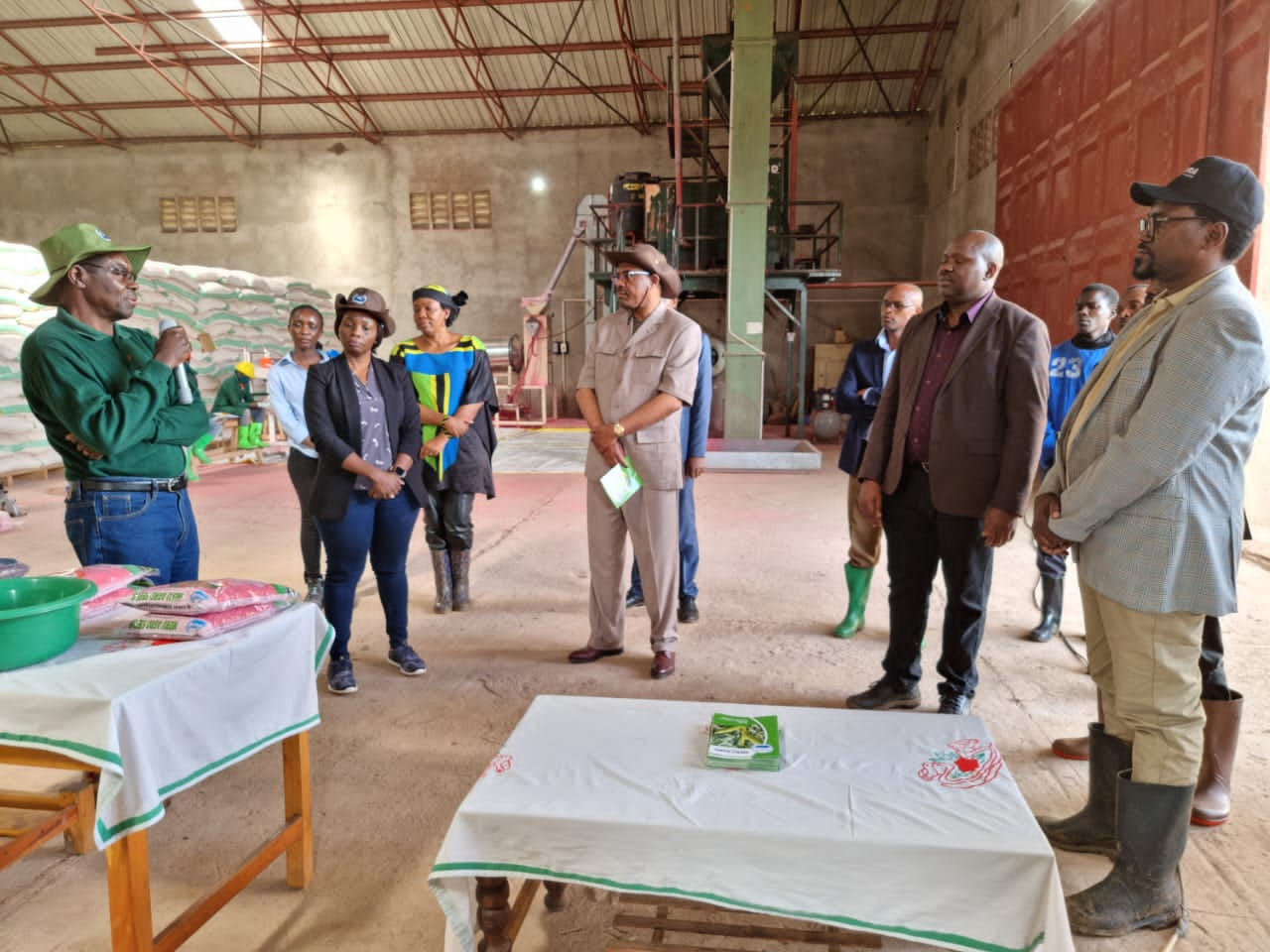Agriculture, manufacturing, and infrastructure are among the top investment opportunities in East Africa, according to EABC
The East African region is ripe with potential investment opportunities. The East African Business Council’s recent presentation at the Lohana International Business Forum shed light on the vast array of possibilities for investors. Led by Mr. John Bosco KALISA, the Executive Director/CEO of the EABC, the presentation highlighted the EAC’s potential for economic growth and development, particularly in the areas of agriculture, manufacturing, infrastructure, energy, mining, oil and gas, tourism, education, research and innovation, finance and banking, and information communication technology. As the voice of the private sector in East Africa, the EABC’s insights provide a valuable guide for businesses seeking to tap into the region’s rich investment opportunities.
“Investors increasingly recognise the East African region as an attractive investment destination, thanks to its favourable economic development, political stability, and improved regulatory environment. With a large market of approximately 283.7 million people, the region offers numerous investment opportunities spanning across various sectors, including horticulture, cash crops like tea, coffee, and cotton, food crops and oilseeds, sugar production, forestry and related products, agriculture, livestock, dairy production, fisheries, and poultry.” – Mr. John Bosco KALISA, Executive Director/CEO of the East African Business Council.
There are many compelling reasons why investors should consider investing in East Africa. Firstly, the region offers access to a large and growing market of more than 283.7 million people, making it an attractive destination for businesses seeking to expand their customer base. Additionally, the region has a combined GDP size of about US$ 305.3 billion, which is expected to grow rapidly in the coming years.
Moreover, East Africa is the world’s fastest-reforming region in terms of business regulation, making it easier for investors to set up and operate their businesses. National investment promotion agencies provide simplified investment procedures and a one-stop center facility to streamline the investment process further.
Furthermore, the region offers numerous investment opportunities spanning across various sectors, including agriculture, manufacturing, infrastructure, energy, mining, oil and gas, tourism, education, research and innovation, finance and banking, and information communication technology. With a vibrant and upcoming capital and securities market and high levels of intra-regional trade and cross-border investments, investors can leverage these opportunities to drive growth and profitability.
The region boasts of an abundant and highly skilled labour force that is educated, trained, mobile, and enterprising, offering a strong foundation for businesses seeking to expand and flourish. With generous incentives offered to investors, including tax holidays and other benefits, East Africa presents a compelling case for businesses looking to invest in a region that offers both stability and growth.
Agriculture and Agribusiness as Central to Economic Growth and Industrialization in the EAC
Mr. John Bosco emphasized the critical role of agriculture and agribusiness in driving economic growth and industrialization in the East African Community (EAC). As the backbone of the EAC economy, the agriculture sector employs more than 80% of the region’s labour force and contributes significantly to more than 30% GDP growth.
Moreover, agriculture is central to the industrialization of the EAC as it provides markets for industrial products and raw materials for industries, particularly the agro-processing sector. This presents a unique value proposition for investors seeking to tap into the vast potential of the EAC’s agriculture and agribusiness sector, which spans across various sub-sectors, including horticulture, cash crops like tea, coffee, and cotton, food crops and oilseeds, sugar production, forestry and related products, livestock, dairy production, fisheries, and poultry.
Investors can leverage the abundant resources and investment opportunities in the agriculture and agribusiness sector to drive economic growth, create job opportunities, and support the industrialization of the region. With the support of the EABC, investors can navigate the investment process, leverage incentives, and tap into the EAC’s vibrant capital and securities markets to grow and flourish in this vital sector.
“EAC major exports include agricultural products such as cereals, sugar, coffee, tobacco, and tea. In 2021, exports to the world were USD 443.4 Million, which has increased by 40% from the previous year. Additionally, exports were USD 2.6 Billion, which has led to an increase of 5% compared to the previous year,” said Mr. John Bosco.
seeds opportunity;
- Oil seeds have increased by 30% due to exports of around USD 370.4 Million in 2021
- EAC still imports a lot of edible oil. Processing of oilseeds locally is now on the rise, therefore there is potential in supplying oil pressing and processing equipment. Common oil seeds produced in the country include sunflower, sesame, groundnuts, palm oils, etc
The region has millions of hectares of arable land suitable for agricultural mechanization and irrigation. The investment opportunities include; large-scale commercial farming, deep-sea fishing in the Indian Ocean, agro-processing, value addition in agriculture, livestock, fisheries and forestry products
- Fisheries, cotton, cattle, tobacco, and coffee cultivation are the primary investment prospects in the industry. However, analysts believe that shifting from subsistence to commercial farming is the key to sector growth.
Manufacturing:
The manufacturing industry’s contribution to GDP in East Africa is currently estimated at 9.7%. EAC Partner States targets to increase manufacturing contribution to GDP to reach 25% in 2032.
Manufacturing is a key sector in EAC’s economic development through high-value addition and product diversification based on the comparative and competitive advantages of the region.
- There is a wide range of direct and joint-investment opportunities in this sector, including agro-processing, garments, the assembly of automotive components and electronics, plastics, paper, chemicals, pharmaceuticals, metals and engineering products for domestic and export markets.
- Also, the region offers abundant natural resources and provide plenty of raw materials.
Infrastructure
Infrastructure is one of the most critical enablers of successful regional integration in facilitating activities such as trade, agriculture, tourism and the movement of labour and other resources. Thus, attracting investment into the region. The EAC operates five modes of transport systems consisting of road, railway, maritime, air transport and oil pipeline.
- Therefore, investment opportunities exist in Intra EAC road and railway networks as well in Airports and Port projects.
Energy:
EAC is endowed with diverse energy sources, Investment opportunities exist in the generation of energy from biogas, hydrocarbons (natural gas, oil, and coal), uranium and renewable resources; generation of energy from solar, wind; extraction of biofuels; and geothermal exploration and development.
Mining:
Mining has placed EAC in the higher ranks of African economies in terms of attracting FDI. EAC is endowed with a variety of industrial minerals and precious metals as well as gemstones.
- East African nations are well endowed with a diverse range of mineral resources. Burundi, for example, is rich in uranium resources, gold, Colombo-tantalite, cassiterite, nickel, and vanadium.
- The Democratic Republic of the Congo (DRC) is perhaps the region’s most prominent mining centre, with significant undeveloped gold, cobalt, and high-grade copper deposits.
- The DRC produces well over 100,000 metric tons of cobalt, accounting for 70 per cent of world output. The DRC is also the third-largest producer of industrial diamonds, accounting for around 21% of global production.
- Tanzania is rich in metals such as gold, copper, iron ore, cobalt and silver and industrial minerals such as diamonds, tanzanite as well as graphites
Oil and Gas:
South Sudan has huge oil deposits. Also huge quantities of oil was recently discovered in Uganda, Kenya and Tanzania. Oil exploration is ongoing in EAC Partner States.
- In Tanzania, there have been several gas discoveries on the coastal shore of the Indian Ocean at Songo Songo, Mnazi bay and Mkuranga in Coast Region. These discoveries are catalysts of natural gas developments in Tanzania.
- The EAC region is becoming an oil and gas hub that is presenting a lot of investment opportunities and attracting a lot of FDIs. Most opportunities are in exploration and extraction.
Tourism:
Tourism is one of the significant sectors in EAC economy. It contributes an average of about 17% to export earnings, 10% to GDP growth and 7 % to employment opportunities in the Region.
The East African Community (EAC) partner nations (Kenya, Uganda, Tanzania, Rwanda and Burundi, South Sudan, and, most recently, the Democratic Republic of the Congo) have also increased their tourism and wildlife industries collaboration with a vision of creating a single tourist destination. Task groups have been created to produce a work plan for the research and piloting of a single tourist visa to boost the sector’s growth.
- Tourism is one of EAC’s most important industries and has strong linkages with transport, food production, retail and entertainment. EAC is still one of the most popular tourist destinations and has many investment opportunities in the tourism sector. The investment opportunities include the establishment of resort cities; branding of premium parks; construction of internationally branded hotels; Development of high-quality Meetings, incentives, conventions and exhibitions (MICE) tourist facilities and conference tourism facilities; health and sports tourism.
Education, research and innovation:
The investment opportunities in this sector are in establishment of specialised education, research and innovation institutions to address specific regional human capital requirements and research and innovation needs of the region.
Finance and Banking
- The fast rise of the informal sector creates opportunities for loans and associated services.
- services are also in high demand.
- The East African Securities Regulatory Authority assists member nations in developing capital markets institutions and encourages information sharing to help enforce rules and regulations in various countries.
Information Communication Technology
The information and communications technology (ICT) industry has been a critical engine of economic growth in East Africa, expanding by 40%.
- Digital trade is increasingly important and comprises both digitally ordered trade in goods and services
- Information technology and telecommunications are vibrant sectors of the East African economy
- The penetration of mobile phones has grown steadily; significantly outpacing other communication methods except for radio and newspapers
- This has led to financial inclusion through mobile money services, thus building more resilient communities
- Small and medium-sized firms (SMEs) are positioned to play a more prominent role in the industry’s next expansion phase.


